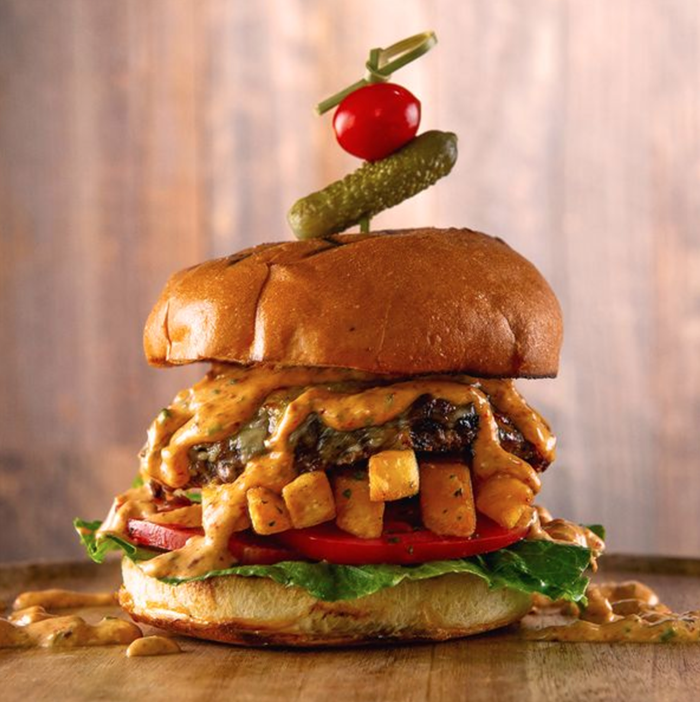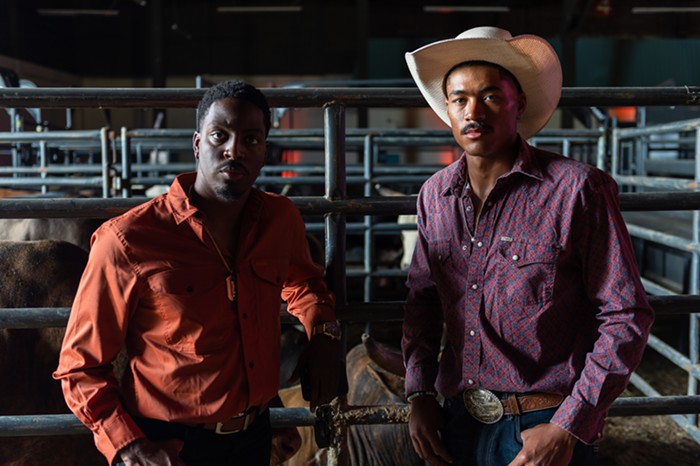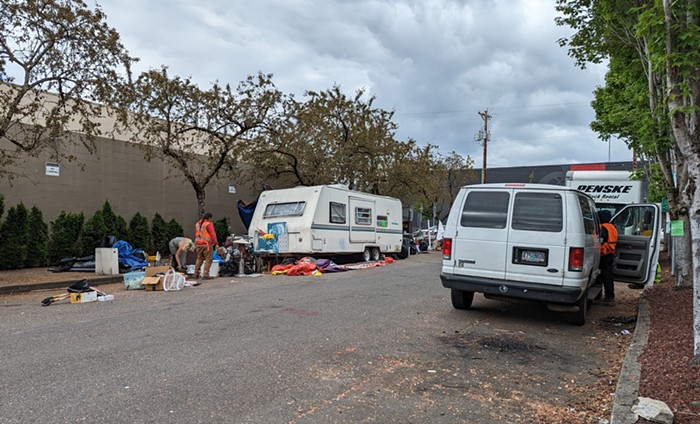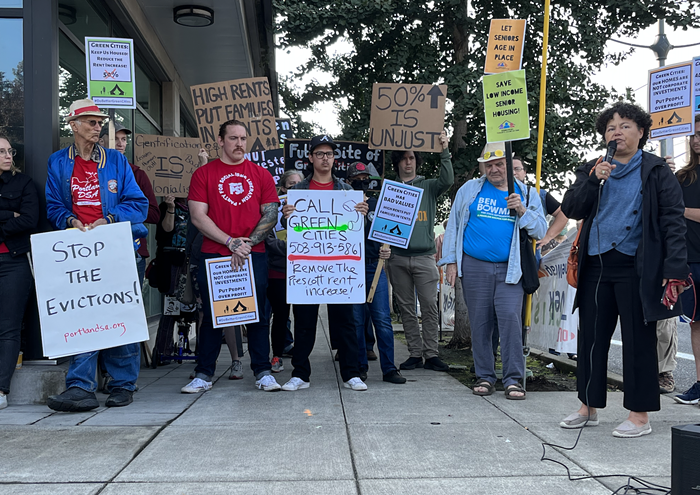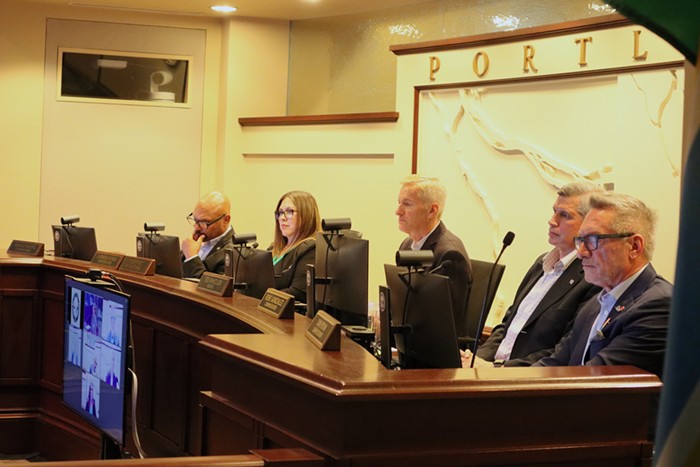
Washington native, Robert Hess, is a founder of the Museum of the American Cocktail in New Orleans, as well as a rabid home mixologist. He is the brains behind the essential cocktail website, drinkboy.com, and a veritable font of information on all things boozy.
I cornered Hess last Sunday at the Great American Distillers Festival to talk about the Cocktail Museum, home mixology, and how to set up your own home bar.
PAC: Tell me about the Museum of the American Cocktail. How did that come about?
Robert Hess: The Museum of the American Cocktail is located in New Orleans, we just got through re-opening it. We started in 2004. It was concept that was already going through the mind of Dale DeGroff [a.k.a. King of Cocktail, of the Rainbow Room] and Jill DeGroff [saloonartist.com] and Audrey Saunders [legendary mixologist, Pegu Club, Manhattan]. We started talking about this and a lot us had stuff in our collections, whether it was books or paraphernalia or information, and we said, "Hey, we could open a museum, because we need something out there that illustrates the history of the cocktail."
Once you understand the history of the cocktail you can appreciate better the product sitting in that glass. So, it's no longer an alcohol delivery vehicle, but it's now something interesting—something that has a story behind it.
RH (continued): Within a couple of days we had the right contacts. There was a museum right down the street from where we were staying in New Orleans and there was a whole area where they needed to take stuff off the floor to catalog it. Rather than having this empty space they said, "Why don't you put your exhibits up here and have your museum here." This was the Pharmacy Museum. This was in August and by January we had the grand opening of the Museum of the American Cocktail. The next August, Katrina hit. We knew we were only going to be [at the Pharmacy Museum] for a year, so we were already planning on coming in in September and pulling our exhibit out to put it in a new location. Unfortunately the storm took away that new location; it was completely out of the question.
Fortunately, Ti Adelaide, who owns Cafe Adelaide and the Swizzle Stick Bar in New Orleans, is part of the Commanders Palace organization. They had a restaurant in Las Vegas that had a large banquet room and they said, "We can take the museum and put it in display cases around the perimeter of our big banquet room. You can have your exhibit there instead." So we were there in the Commanders Palace in Las Vegas. Unfortunately, Planet Hollywood came in and bought out the casino and the shopping mall that the Commanders Palace was part of. Commanders Palace ended up losing their lease which meant we no longer had our space. We spent the last year trying to find a location.
Back in New Orleans there was an organization called the Southern Food and Beverage Museum. Food and beverage, cocktails, they kind of blend together, so we ended up finding a location on the river walk mall on the waterfront of New Orleans, right next to the French Quarter, right in the heart of where everything is going on—all the great food and great bars. So, there's the Southern Food and Beverage Museum and we have an exhibit space within that. We have somewhat the same exhibit we had in both Las Vegas and the previous space in New Orleans, but with a bunch more stuff. We have even more things moving forward. We even have plans of rotating through the exhibit every six months to a year, refreshing everything in the museum.
PAC: What do you have on display? Are they mainly from your personal collections?
RH: The start off of it, basically we beg borrow and steal. I mean, we know a lot of people so I have stuff from my own personal collection, Ted Haigh, the curator, also known as "Doctor Cocktail" from Los Angeles, he's got a tremendous collection of old bottles and cocktails shakers and stuff like that. Steve Visakay, the great cocktail shaker collector, he's supported us with some stuff, as well Dale DeGroff. Lately, Ted has actually been able to start purchasing stuff for the museum, so a lot of things in the museum right now are actually owned by the museum itself, rather than being on loan from the various members.
PAC: How does a person get into cocktail history and home mixology?
RH: Everyone has a different story of how they get into it. Sometimes it's going in a bar and having such abysmal drinks that they think, "There must be something better than this," and start trying to find out what that something better is. Sometimes it's because they were a bartender in college and just wanted to learn more. Sometimes it's because their father was a bartender and they remember the drinks being so much better.
I got into it by way of a beer engine. I was in England in 1991 and saw a beer engine. Your seeing them more now, but if you go into a good brewpub they'll have their standard beers on little teeny spigots, and then they'll have their cask conditioned ales which aren't carbonated at all. If they're not carbonated then you have to pull the beer into the glass. So basically [beer engines] are man handling the beer. It's like those old water pumps.
I don't think there was anyone here in the United States with a beer engine yet. I said, "If I ever build a bar for myself, I'm going to put in a beer engine." So I started building a bar and I put a beer engine in and I said, "Gee, I want one those soda guns where you can just push the button and get coke or ginger ale or soda water, and I want an ice machine, and a glass washer, and all that stainless steel, and all those bottles along the back of the bar, and oh... I forgot about all those bottles." Suddenly, I've got to be able to know what to do with all those bottles.
I've got a strong chef background. It's just recipes, right? I began to make cocktails, and I was doing it from both books and the internet, which was just starting to come around at that time. I came across a website that was changing a recipe once a week and fortunately they were good classic recipes. So, once a week, I would log-on, find out what the recipe was for that week, go to the liquor store, buy what I needed and all week long, I'd just make that drink over and over—trying different things and looking at different books. I noticed differences in the recipes and I had to learn the differences in these products to really learn what was going on there.
After all this time I spent making my own cocktails at home, I'd go to bars and start ordering cocktails and they were shit. So I'd say, "okay, I'm going to focus on making cocktails at home."
One day, I was in Paris, at the Ritz, at the bar Hemingway where Colin Field is the head bartender. He was making a drink and I was like, "Oh my god this is the first drink I've had from a bartender that actually tastes good." We started chatting with each other and I said, "My god, this is a bartender that actually knows his stuff. He knows the history of the drink, he knows how to make them properly, and he can make drinks on the fly."
I realized that where there is one, there must be more. So, I came back to the states and made it a point to hit as many bars as I could, trying to find those bartenders who really understood it, who were trying to equate the concept of bartender to chef. I think that really helped a lot.
PAC: That trend of culinary cocktails, the bartender as chef, has been on the rise. Do you think this is a trend that's going to die out?
RH: There are a number of cities that I think are flagships for cocktails; New York, San Francisco, Portland and Seattle are the places where the cocktail revival is happening. I don't see it as a trend, I see it as a revival. We are finally rediscovering what can happen in a cocktail. In each one of those cities you have people who are focusing on the history, the classics.
Just like chef training, the first thing they really slam into you is the understanding of classic cooking methods, sauces, ingredients and techniques. If you tried cooking without understanding the classics, you might come up with something good—just like a million monkeys, with a million typewriters, in a million years, might come up with Shakespeare.
As long as bartenders are being grounded in the classics they can make a great Old Fashioned. They can make a great Martini that's not your dump and swirl dry vermouth martini, but it's a true Martini. Those are the drinks, simple drinks, three ingredients or less. Properly done, you can shock a person with how good a drink made like that can be. Anybody can throw a dozen ingredients into a glass and someone's going to say, "Oh, I love that fruity sweet flavor," or something. But as soon as they finish, they'll say, "Oh I'll have something different now." So, I think that the cocktail culture in Portland and these other cities, as long as it really stays true to the classics, can maintain the resurgence, rather than being a trend.
PAC: For the home cocktail aficionado, what would you say are the essentials for a home bar? Where should a person start?
RH: Probably the most important thing is going to be the gear. It's not a big investment at all. The last thing you want is something that's going to take a lot of money to get into. Go for something quick and something simple. 
Get a Boston shaker. I personally don't like the standard three part shaker, also known as a combination shaker (which is a base a strainer top and a removable cap), partly because they are made really cheaply and they don't work that well. Another reason is that when you're trying to strain, the strainer doesn't work that well so it's just constantly draining out. The Boston shaker takes a little bit of skill to use properly because you wouldn't think that this glass and this mixing container are going to fit together and stay together. And if you don't do it right, they don't stay together. But I'd recommend getting one and playing around with it so you actually feel comfortable with it. If not, a combination works fine. Basically any sort of cocktail shaker you can use to chill your drink down. 
I think you need a good strainer. I love the OXO strainer. It's a bit more expensive than those cheap strainers, like six or seven bucks, but I think it's a wonderful strainer. 
You need a jigger. A jigger is really important; because you want to make sure you measure those drinks. I hate those hourglass jiggers. The standard hourglass jiggers that you see, they don?t even tell you what the measurements are. You just have a big end and a little end, and you don't know what you're doing. You can't measure anything but the full amount because with a conical shape. You can't measure half measurements. So again, an OXO, angled mini jigger, usually found in the measuring equipment in kitchen stores, is a wonderful jigger. The only thing that's missing on it is a 3/4 ounce mark. Other than that it's just a perfect jigger for use at home. 
You also need a bar spoon and maybe a channel knife for garnishing. The key is that you want to be able to mix your drinks really well, either shaking or stirring, and you want to strain them into the glass.
The next thing that comes up is the glassware. The glassware is extremely important. I actually hate those large glasses, those 10 ounce glasses you can buy from Crate and Barrel and places like that. They are far too large. What I like to do is go to antique stores. You can find some glasses for between five and seven dollars a stem, which is relatively inexpensive, actually. Quite often, they are quite fancy. They don't have to match. It's nice if they're about the same size, ounce wise. They can be different, height wise, but you want about four to five ounce glasses, and that's it. With that you can have a ton of fun.
PAC: You don?t need a muddler?
RH: I don't think so. When I started out, no one was making muddlers. I just bought a wooden spoon and cut it off just above the shoulder of the spoon, so I had a bit of spoon end. That worked perfectly fine. But you can use all sorts of things. The main thing you're going to be muddling is mint in a Mojito or a sugar cube in an Old Fashioned. The ice muddle, where you're muddling through the ice, is a waste of time. All you're trying to do with that is something like getting the juice out of a lime. There are better ways to get the juice out of a lime. So some sort of juicer might be good to add. Other things you want will come up as you start making drinks. Rather than simply buying stuff sight unseen, I think it's better to know what you're trying to get.
This leads us to the spirits, which I think is one of the biggest flaws that people get into when getting into home bars. Early on, I made a couple of attempts at saying, "Hey, I have a Mr. Boston cocktail book and I want to make cocktails." So, I'd go to the store and buy a bunch of shit. And it was shit, because the good stuff cost too much. Then I'd run home and not use it, because I didn't know what I had and I didn't know how to use it properly.
So, my recommendation, for anyone learning to bar tend at home like a mixologist, is to pick one recipe that you know you like, like a Lemon Drop or Sidecar or Mojito or something. Go out and find a couple of recipes for that drink, and buy the ingredients you need for that one drink. Then, spend a week or two where all you do is make that one drink, using the variations of recipes and techniques.
Find out what works and what doesn't work. Do you need to shake it with ice? Do you need to stir it with ice? Is it better to use fresh lemon juice or bottled? Can you use sour mix? Try it all. Then, when you think you've nailed that drink, try another drink that you like and go on from there. One drink at a time. You're just spending a little teeny amount of money and you're having a great time with that one drink. After a few months, you've got a great liquor cabinet, you know how to use every single bottle in it, and you have a great recipe for every single bottle.
Also, what I did in the beginning, since I was buying stuff in the liquor store based on name and price, I'd ask, "Do I recognize the name and is the price cheap." The next bottle I'd buy when I was running low would be something different. Then, I'd do a taste test between the two and see what I liked better. Eventually you find what fits to your palate.
The most import thing to remember is that bar tending is like being a chef: you really want to understand what you are doing and why you are doing it. There are so many bartenders today who are doing things just because that's how they were taught. Go through different recipes. Find out what tastes better and why. The "why" is the important part.
Robert Hess also recommended the following books:
Education
Joy of Mixology, Gary Riggen
Fine Art of Mixing Drinks, David Embry, Mud Puddle Books
(will be re-released in a couple of months on cocktailkingdom.com)
Recipes
Mr. Boston, new edition
The Craft of the Cocktail, Dale DeGroff
Essential bartenders Guide, Robert Hess, Mud Puddle Books
